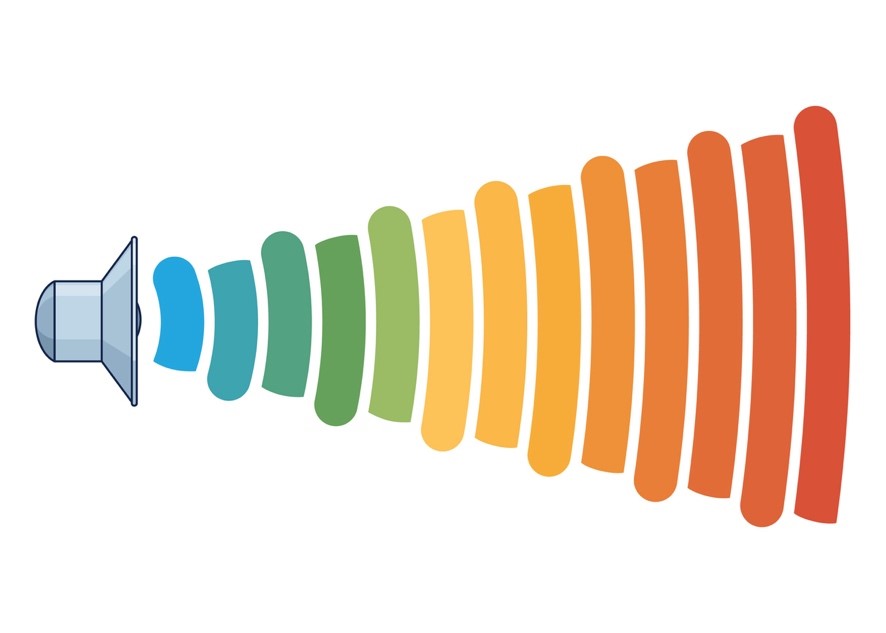As K-12 classrooms grow more diverse, schools are adopting advanced audio technologies to support English Language Learners (ELLs). Yet, research and expert insights reveal that the benefits of these systems extend far beyond ELL students by improving learning conditions for all students. From voice amplification to immersive audio environments, these technologies are redefining what it means to create an inclusive, effective classroom.
Much like research on Universal Design for Learning (UDL), school leaders have found that addressing the needs of struggling students—whether due to language barriers, neurodiversity, or physical disabilities—benefits all students, sometimes in surprising ways, as new tools and strategies are implemented. In introducing new audio tools in K-12 classrooms, we are seeing a lot of unexpected benefits and uses for these tools.
The Rise of Audio Technology in K-12 Education
Modern audio systems in schools go well beyond basic microphones. Today’s solutions include:
- Instructional audio distribution systems that amplify a teacher’s voice evenly throughout a classroom.
- Networked Audio-over-IP (AoIP) systems, which transmit high-quality audio across a school’s ethernet network, making it possible to deploy sound in any learning space.
- Portable, wireless microphones and Bluetooth-enabled speakers that allow teachers and students to communicate clearly in classrooms, gyms, and even outdoors.
- Immersive audio platforms such as Dolby Atmos Music and Apple Spatial Audio, offering students a 360-degree sound experience for music and media learning.
- AI-powered translation and captioning tools that deliver real-time language support for ELL students.

Why Audio Systems for ELL Students Help Everyone
1) Clearer Communication for All
ELL students benefit from amplified, clear instruction and, in some cases, real-time translation. But these same systems help every student hear and understand lessons—especially in noisy, acoustically challenging spaces or older buildings not designed for learning. Research shows that children need to hear at least 90% of what is said to fully absorb instruction and young students often struggle to distinguish voices amid background noise. Amplification ensures no one misses key information, regardless of language background.
2) Addressing Hearing Loss and Learning Barriers
About 15% of children ages 6 to 19 have some form of hearing loss, according to the CDC. Audio distribution systems ensure these students—who may not have formal accommodations—can participate fully. These technologies also support students with other disabilities, making classrooms more inclusive overall.
3) Reducing Teacher Fatigue and Improving Engagement
Teachers often strain their voices to be heard over classroom noise, leading to fatigue and even absenteeism. Amplification systems reduce this burden, allowing teachers to speak at a comfortable volume. This improves vocal endurance and ensures lessons are delivered consistently and clearly, benefiting all students.
4) Supporting Multiple Learning Styles
Audio enhancements don’t just make things louder—they make learning more dynamic. For instance, portable systems allow teachers to move freely, share microphones with students for presentations, and integrate music or multimedia seamlessly into lessons. This flexibility supports auditory, kinesthetic, and visual learners alike.
5) Bridging Gaps in Physical Education and Extracurriculars
Instructional audio isn’t limited to the classroom. Physical education teachers use portable audio to communicate over background noise, ensuring all students—regardless of language or hearing ability—can follow instructions and participate safely. These systems are also used for announcements, assemblies, and events, making them a versatile investment for schools.

What the Research Shows
Experts agree that audio technology is a powerful tool for equity in education. Adam Coughran, an educational safety expert, emphasizes that improved classroom acoustics and audio systems “level the playing field, providing all students, regardless of their physical or cognitive abilities, with equal opportunities to learn and succeed.”1 Research over the past 20 years consistently links clear audio with better student comprehension, engagement, and academic outcomes.
The American Speech-Language-Hearing Association also notes that sound field amplification benefits all listeners in a classroom—not just those with identified needs. And in spaces where background noise or poor acoustics are a problem, these systems can be transformative.
Integration and Implementation
Modern audio systems are designed for easy integration with existing school technology. Many are plug-and-play, work with Bluetooth or standard networks, and can be moved between rooms as needed. Networked audio can be managed centrally, and many systems are compatible with interactive whiteboards, computers, and other edtech platforms, streamlining the user experience for teachers and students alike.
While the initial push for advanced audio technology in K-12 schools often centers on supporting ELL students, the reality is that these systems create a better learning environment for everyone. They ensure every voice is heard, every lesson is understood, and every student—regardless of language, ability, or classroom location—has an equal opportunity to succeed.
[1] Coughran, Adam. Revolutionizing Audio Technology for Classroom Acoustics Will Foster and Improve Inclusive Education. Marketscale Blog.
This article was adapted, in part, from the following resources:
- National Association for Music Education. Current Music and Audio Technology Students and Educators Need to Know.
- EdTech Magazine. Three Things to Know About Audio in the K-12 Classroom.
- eSchool News. How instructional audio amps up physical education classes
- THE Journal. The Power of Instructional Audio: Boosting Engagement, Communication, and Access in the Classroom.
- District Administrator. How instructional audio technology can reach more learners
 Leslie Stebbins is the director of Research4Ed. She has more than twenty-five years of experience in higher education and K-12 learning and instructional design. She has an M.Ed. from the Technology Innovation & Education Program at the Harvard Graduate School of Education and a Master’s in Library and Information Science from Simmons College.
Leslie Stebbins is the director of Research4Ed. She has more than twenty-five years of experience in higher education and K-12 learning and instructional design. She has an M.Ed. from the Technology Innovation & Education Program at the Harvard Graduate School of Education and a Master’s in Library and Information Science from Simmons College.








